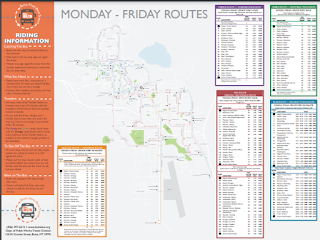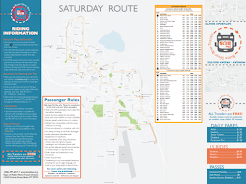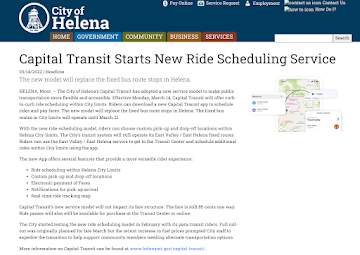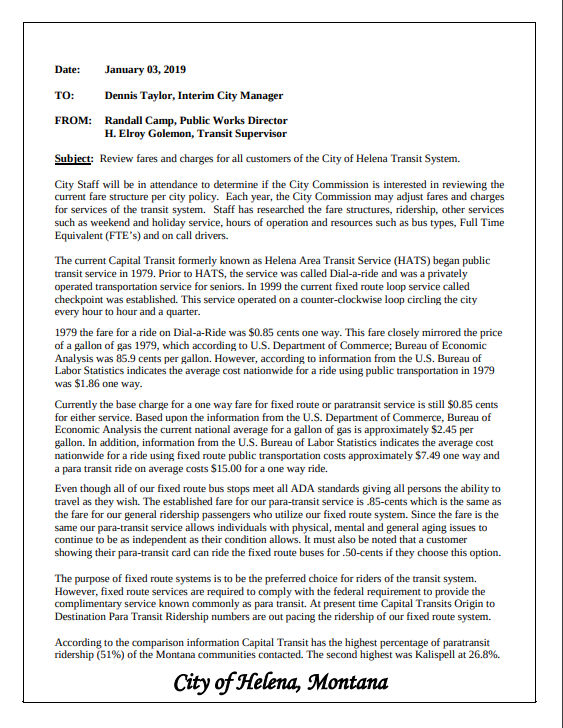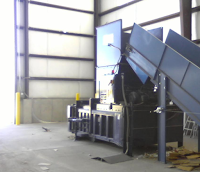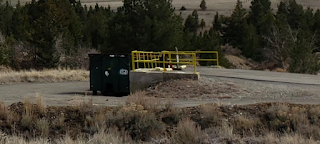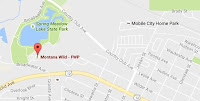Friends,
This Monday, January 13th, the Helena City Commission will consider major changes to most existing residential neighborhoods (
agenda linked here). These changes, specifically "Item B" on the consent agenda, should be rejected. Here is the letter I submitted to the Helena Independent Record:
Keep a Public Process for Zoning Changes
This Monday, the Helena Commission may rezone most neighborhoods to allow higher buildings, increased lot coverage, and more dwelling units. This already happens, but with a public variance process.
Similar changes were rejected in the 2008 zoning overhaul. Residents raised concerns about privacy, sunshine for gardening, traffic, solar access, views, emergency access, and other items affecting their home value and quality of life. The changes will be efficient for developers and increase infill. They will not always benefit existing residents, some of whom might look outside Helena City Limits where six times as many single-family homes are built most years—not a win for density or tax base for emergency services.
There were unintended consequences from the 2008 changes. One of them was a streamlined conditional use permit (CUP) process that is too permissive; something the commission is also addressing this Monday (other examples at MattElsaesser.com).
The commission should reject the proposed zoning changes, make changes one neighborhood at a time, or at least require a CUP for the new rules. Housing can still change, but residents should be able to raise their concerns and the city should address them.
Matt Elsaesser
P.O. Box 321
Helena, MT
In 2014, six houses went outside of city limits for every house build in city limits. Many of the reasons are well documented in this
Helena Independent Record article (four houses to East Helena or the Valley, 2 additional neighboring counties). The issues documented in the article that make Helena the "capital of sprawl" include rural development loans available only outside of the city, difficulty building in the city, and lack of city interest in bringing nearby development into the city. None of these issues are addressed by retroactively rezoning existing neighborhoods including many that are already of the densest in the state. Combined with city action to eliminate off-street parking requirements and not allowing shared water lines, there are real fiscal costs too.
Here are more details on the impacts I have cited related to the 2008 zoning changes:
- An overly permissive conditional use permit (CUP) process left the city commission with the option to either deny a project or not mitigate conflicts. For example, parking or other expansion by a business from a commercial district into a residential district ("highest use") may increase property and tax value. A CUP process, in theory, could mitigate the impacts to the homeowner is this scenario, but only if the CUP process allows conditions to mitigate conflicts.
- Default approval of minor subdivision with no review of traffic impacts, costs to city utilities, and other impacts.
- City utilities subsidizing new axillary dwelling units (ADU's/Mother in Law Apartments) in existing neighborhoods by using water main replacement funds to run lines down alleyways with minor subdivisions. (This could be addressed by requiring easements when lots are subdivided but the city utility often covers this cost--$300,000 for around 10 new houses one year. Other new, non-infill development would have paid these costs directly.)
- Allowing new duplexes and apartment buildings in all residential zones will increase traffic in some areas. It is not always going to be a problem, but the city is left with no tools to mitigate these impacts.
- Example: Someone builds a "mother-in-law" apartment on the garage off of the alley and then sells the garage has a separate house. City requirements will include new water services down the alleyway that must be paid for.
- Continued growth outside of city limits for single-family homes as high as seven houses per year for every house in the city. Some of this was inevitable as some folks want to live in a more rural setting. Much of it was not.
- Allowing four-plex apartment buildings in the consolidate Residential One and Residential Two (R1/R2) zoning districts. This is allowed by combining the right for a duplex on any two adjoining lots to be combined. (Not inherently bad but not what a young family might expect to be built against their back yard)
- A lawsuit against our public airport, proposed emergency zoning, and near failure to renew the airport to prevent uses recently affirmed in the zoning update. (Incidentally, this likely stopped hundreds of state jobs and an additional parking garage from going downtown at the core of our community)
- Continued distraction from serious planning work to realize the City-County Memorandum of Understanding regarding joint design standards within the urban boundary(s) set by the current growth policy.
- It remains less favorable to develop large subdivisions in city limits relative to outside of city limits. This includes higher infrastructure costs since new development must overbuild infrastructure to meet Helena's streamlined zoning and their housing goals. To get higher density, higher lot coverage single-family zoning, developers must try for a planned unit development or select higher density zoning and include their own covenants for use. This means the city must require wider streets among other things since the zoning would allow for more apartments and residents, even though the homes are single-family. Costs are higher and the density of the development is offset by wider streets.
The City would do better to focus on other barriers to development in the city relative to areas outside of city limits including other counties. One major disparity is the allowance for rural development loans outside of city limits; something the commission could work with our congressional delegation to address as other communities have done by simply grandfathering the existing or previous city limits to allow new growth in the city to be eligible for the funds.
- ME
p.s. The city could genuinely lead to protecting our environment in a lot of areas. In this case, the city could condition new development rights with substantial economic benefit to the developer to include provisions for green building and public safety. The city is not winning on "smart-growth," infill, and like policies for the larger community.
p.s.2. As
I wrote in 2014, while serving on the commission, the city actually needs more zoning designations to better serve residents and growth policy goals. Ironically, these changes continue a path going the other direction.
 From: https://www.helenamt.gov/fileadmin/user_upload/Commission/Admin_Meeting_Packets/2019/1-9-19_Admin_Packet.pdf (Note: The memo compared route numbers without including the East Helena route)
From: https://www.helenamt.gov/fileadmin/user_upload/Commission/Admin_Meeting_Packets/2019/1-9-19_Admin_Packet.pdf (Note: The memo compared route numbers without including the East Helena route) 